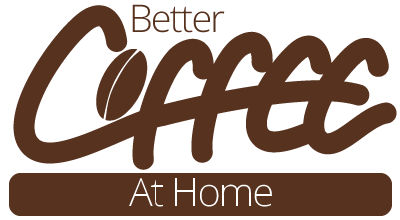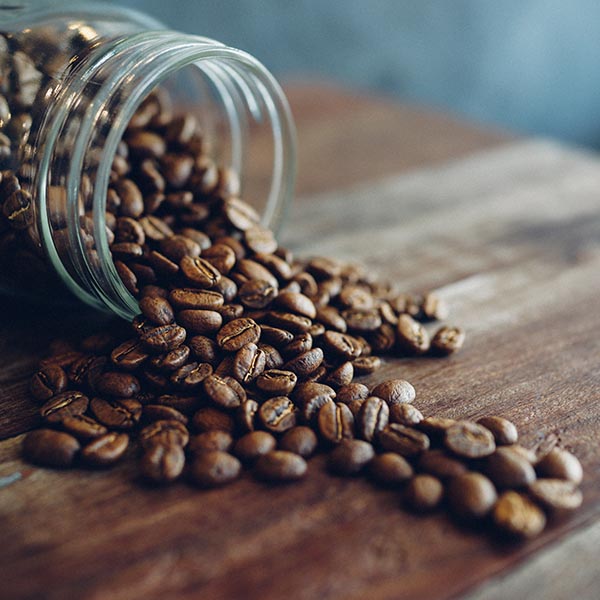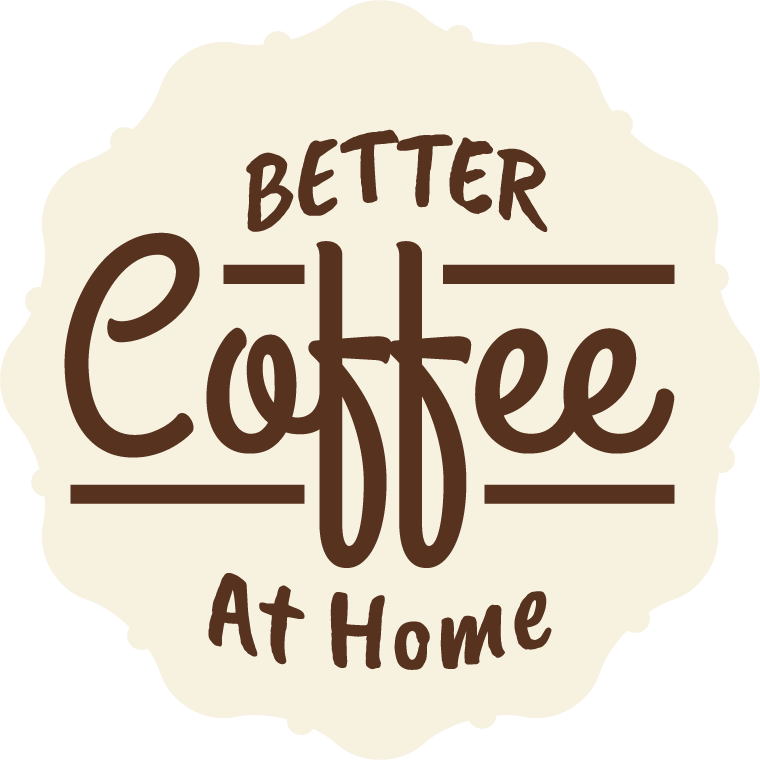Learning to be a home coffee roaster is so much fun! Finding out how to change your roast each time to give you a different flavor is so exciting and kind of addicting!
You probably either have fresh green beans from a local shop that you are ready to roast or you have grown your own.
Or, maybe you are still in the market for some green coffee beans to roast. You can get some from sweet maria’s, an awesome online resource in the coffee world.
If you need help choosing the right beans check this out. It will help you understand specialty coffee a little more.
Either way at this point in your journey you are almost ready to enjoy a cup of freshly roasted, freshly ground coffee.

Roasting causes chemical changes to take place in the bean. The coffee roasting process extracts the flavors and aromas that are locked in the raw bean.
An unroasted bean has no flavor or way of being turned into a cup of coffee until heat is applied.
Roasting coffee is an acquired skill. It takes many batches of roasting to actually feel confident and know what you are doing.
Tip: Start with small batches of coffee beans, like a handful size or so. This way when you’re first starting and you’re ruining a few batches you wont be wasting all of your coffee.
Really when it comes down to it, there are no set in stone rules to the perfect roast. This is a really personal process and you have to experiment and find out what you like best.
This should not scare anybody who has never roasted coffee before, this should be exciting news. You will get to make new roasts that you have never tried before because they will be completely unique to you.
This guide will walk you through what to look for when roasting coffee and different ways to do it.
Why Be A Home Coffee Roaster?
The number one reason why I think you should roast your own coffee is because of freshness. The fresher the roast the better the taste. Hands down.
Another reason is that you can experiment with roasts that you typically wouldn’t be able to get at your store. Maybe you personally like a roast that’s not popular to the main stream.
It’s Fun, Roasting coffee uses your senses, If you pay attention it will really put you in the moment. You use Sight and smell as well as your ears to hear when the beans start cracking so that you can get the perfect roast.
What is the coffee roasting process?
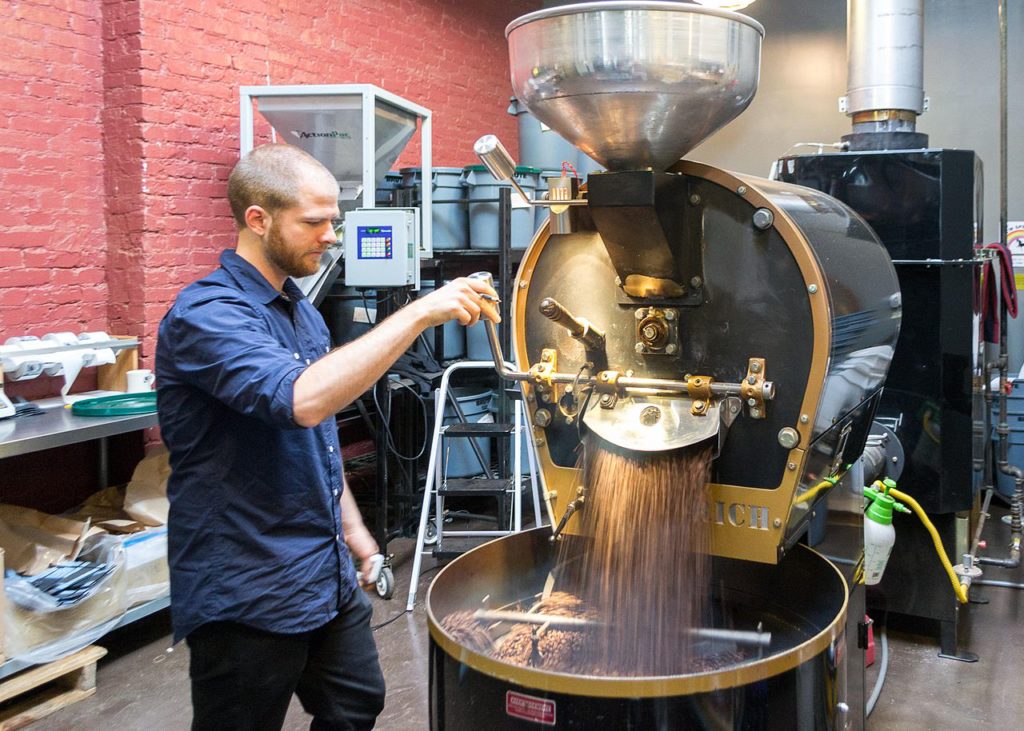
Simply put, it’s taking your green, unroasted coffee beans and applying heat to them while keeping the beans moving.
Making sure the beans are kept moving with nice even airflow around them is essential to an even roast.
When said like that it sounds so easy, don’t be fooled though, this is an art form. Roasting the coffee bean can really enhance(or destroy) the flavor of your coffee.
Generally speaking the roasting process can take anywhere from 10-20 minutes depending on the methods you use and your preferred roast type.
The first few minutes of the roasting process is just removing any excess moisture that is still in the bean. Some roasters like to use slow heat in the beginning to remove the moisture while others like to use high heat in the beginning.
There is no one perfect method when when it comes to roasting coffee.
This beginning phase is bringing the bean to a state called “pyrolsis” otherwise known as “first-crack.”
First crack is described as the sound of popcorn popping. This happens when the internal temperature of your beans have reached 385°F.What’s happening at first crack is that water is evaporating and chemical changes are taking place inside of the bean.
The beans go through lots of changes as they get to the point of pyrolysis, Their size changes as they begin to lose moisture and shrivel early in the process. As we continue into the roasting process the beans expand as they are heated and change colors to a pale brown until first-crack is reached.
At this point your beans will turn to a medium brown color.
Some coffee roasts are done at this point. moments after first crack would be a light roast.(We will talk more about roasts shortly.)
If you would like you can continue to roast your coffee beans for a few more minutes. This will give you a medium roast and the bean will be at a temperature of about 426° F.
If you prefer a dark roast you can continue roasting your coffee. Dark roast begins around 435°F – 437°F.
At this point you should hear the “Second Crack.”
The second crack sounds a little different than the first crack. This sound is described more as rice crispies popping. There are a lot more popping sounds close together, it’s a little more violent sounding than first crack.
At this point oil is starting to be extracted from the bean and you may notice that the surface will begin to look smooth.
After second crack I would not recommend roasting your coffee for any extended period.
To take some words from Chris Ferguson who owns good turn coffee. “36 seconds past second crack and you will get burnt garbage.”
It’s important to note that the roasting times are not set in stone. Lots of variables can affect the amount of time it takes to roast a good bean. While roasting pay attention less to the time and more to the bean. The way the bean sounds, smells and looks are better indicators than time is to a finished bean.
Once you have your beans roasted to your liking, it’s important to begin cooling them right away.

Depending on how you are roasting your beans there are a few different way to cool them.
I’ll get into this more when I talk about the different machines you can use to roast coffee.
So you can see once the roasting process starts it’s very important to be ready. Things can happen very quickly once you start. So it’s important to keep a close eye on your beans.
Be sure to note the color, sounds and smells as you’re roasting. These senses will be guiding you to a good cup of roasted coffee.
So,there are plenty of different machines and roast types to choose from.
Roast Types And Profiles

This will be a quick overview of the different roast types and what to expect with them. A roast master Would be able to go way more in depth with this and if you’re interested in more in depth training definitely take a look at these guys: Mill City Roasters
I think this will suffice to get you roasting at home though, especially if you’re new to roasting coffee.
It’s important to note that roast names and descriptions are not standardized in the coffee community. Starbucks roasting profiles may be different than your local coffee shop.
The easiest way for the at home coffee roaster to tell what kind of roast you have is by sight,smell, touch and taste.(surprise.)

New England – This is a light roast and is usually what you are getting at most of the coffee and donut shops. It’s popular for a good reason. Some of the best beans are roasted this way because this style is so revealing. Roasting beans so light allows the full flavor to be tasted. The roasting process doesn’t add any caramel notes to the cup. Beans roasted in this way tend to produce cups with less body however.
City/Full City – For most specialty coffee’s this is the most popular roast. The beans are held on the heat a little bit longer allowing more of the sugars to form inside of the bean. This roast will add some caramel notes to the roast but still have plenty of liveliness to it. The final bean is just slightly darker than the new england roast, maybe two shades or so.
Vienna – Visually, This is just a shade or so darker than Full city and you should also start to notice little oil drops form on the outside of the deep drown beans. You can still taste the uniqueness of the beans but there is a notable addition to the flavor many people describe as kind of syrupy.
Espresso – We are getting into the darker roasts now. Beans roasted this way are normally roasted for longer periods of time at lower temperatures producing a deep brown bean that has a good balance of flavors. You can use this roast for any type of brewing method but if making an espresso you should never use beans roasted any lighter. Espresso made with a lighter roast will be bitter.
Italian – To confuse you a little more, most of the world think of the Italian roast as the standard espresso roast. The beans are darker and have more oil on them than the espresso roast. The darker in the roasts we go the more liveliness we lose but we do gain more bittersweet notes and complexity.
French – The darkest roast commonly accepted.These beans are dark and shiny becasue all of the oils have been pulled out. A coffee roasted this way has a smokey taste to it, Kind of like something that has been cooked on a grill.
different methods of roasting coffee at home
Now that we know a little bit about roast types lets dive in to the process of roasting coffee at home.
No matter what method of roasting you choose, Coffee produces whats called ”chaf”. This can be very messy. This is just the dried parchment layer of the bean that is now crumbling away. This is important because with certain methods this can build up and become a fire hazard.
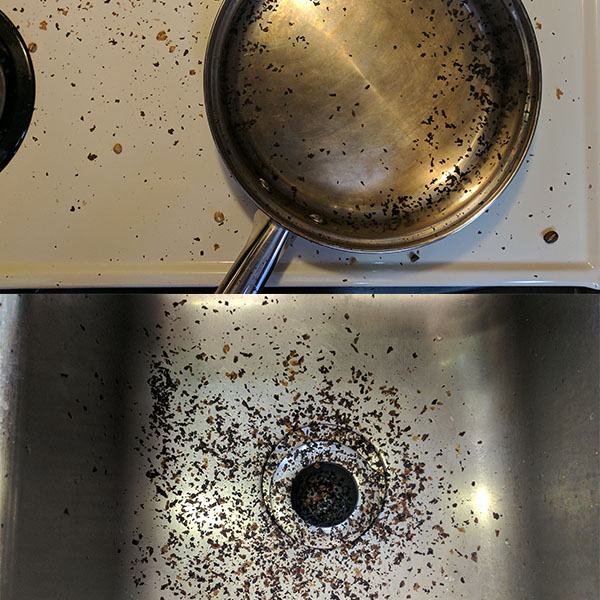
Note: Before starting, make sure you have a good ventilation. Maybe near a window that you can open or a hood with a fan above your stove. Roasting beans makes plenty of smoke. You probably don’t want your smoke detectors going off.
In The Oven
I find roasting in the oven difficult. I always tend to get uneven results, some beans are burnt while others aren’t nearly ready. I have an electric oven and that may have something to do with it. I have read that gas ovens give a better more even result.
That being said there are some positives. This is one of the easiest methods because you don’t really need any special tools. The only thing you will need (besides an oven) is either a stainless steel vegetable colander or a perforated pan.I don’t recommend using a cookie sheet. The reason is because you want there to be plenty of airflow around the beans to ensure an even roast. With a cookie sheet you just don’t have that.
Oh and I guess a whisk for stirring beans and an oven mit.(Hopefully you have that laying around.)
First, pre heat your oven to 500°F.
Next, place your beans inside of your colander or on your perforated pan. Spread them out evenly making sure not to build the layer too thick.
From here place your beans on the middle rack and keep an eye on them. In about 5-7 mins you should hear your “first crack.”
Be sure to constantly check on your beans, every minute or two you should shake the beans around. Try to do this as quick as possible, You want to keep as much heat trapped in there as you can.
Once you have reached the desired roast type you must cool your beans immediately. You can do this by just pouring your fresh roasted beans into a separate bowl and stirring. Movement and airflow will help in cooling.
This guy doesn’t use a perforated cookie sheet but he constantly removes his beans and gives them a shake.
Stove Top

We really encourage you to try this method, you really get to know your coffee. You get an up close view of how the whole process take place.
You will get to see how the heat slowly changes the color of the bean and brings out the aroma!(Super personal!)
You can use any pan that will hold a nice even layer of your coffee beans that does not have a special kind of coating.
If you have a stainless steel or cast iron pan those would work best.
Again, make sure that you have your vent fan on or window open(or both) because roasting beans will make plenty of smoke.
You should turn your stove to medium to medium-high heat(around 500).
Pour your beans in and begin stirring. No need to be super aggressive, just make sure that they are constantly moving.
I like to use a whisk to stir the beans, It seems to work best. I also like to place a lid on my stainless steel pan so that I can give the beans a good shake.
Just watch as your beans begin to turn colors from green to yellow to light brown. At about 5-10 minutes into the process you should hear your first crack. Again, this is not set in stone the best way to know you’ve reached first crack is your ears.
At this point it is up to you to determine when the coffee is done roasting, You can continue if you want a deeper roast. Watch as your beans turn deep brown and begin to smooth.
As with the oven method be sure to pour your beans into a separate bowl and stir so that they can have a chance to cool.
Popcorn Popper
There are plenty of brands and types of popcorn poppers. It’s important to note that these were not designed to roast coffee beans(although they work extremely well).
With that in mind, it’s important to pick the appropriate popper.
Important: Popcorn poppers that have a mesh screen on the bottom are not to be used. These will collect the chaf. Chaf is perfect kindling, Built up this can be a fire hazard!
The best popcorn popper for the job is one with vents on the bottom that blow hot air up and rotates the beans.
Here is a great video on how to use one, you can see that the chaf kinda becomes a mess with this method.
It’s important to note that using a popcorn popper will result in a faster roasting time. You will notice in the video that they reached the second crack stage four minutes into roasting!
Thanks to The Green Coffee Beanery for the video
Here is a link to the popcorn popper they used for roasting.
While the popcorn popper is probably the easiest method out there I think it takes away from the personal touch that comes with roasting in other methods. You’re not really hands on with the beans, but that’s just me, the convenience is really nice.
Behmor 1600
The Behmor home coffee roaster, This is for anybody who wants to really get serious about roasting coffee at home. At quick glance it looks kind of like a toaster oven, but on the inside it has a built in rotating drum and a chaf collector(No need to worry about fires!)
Since this is a drum coffee roaster there is no need for you to constantly turn the beans, the machine does it all for you.
This thing has a really well built programming system. It has pre programmed roasting profiles that you can choose. It will set itself at the appropriate temperature and time. That being said, do not walk away from your machine. You should constantly be watching your beans, this is actually part of the fun!
Of course you can still make adjustments to your roast in anyway you want with this machine(You’re not just stuck with the presets).
With this machine it’s important to note that the cooling phase is already planned out with the preset times. If you’re beans aren’t where you want them when the actual roasting process is complete don’t add time right away. Give it a few minutes and see, the beans will still continue to roast even without the coils on just due to built up heat.
Another HUGE bonus of this machine is the “smoke suppressing technology.” No need to worry about those smoke alarms going off!
If you have the desire you can your behmor 1600 from amazon! It’s a little on the pricey side, depending on your pockets of course but it is a really fancy home coffee roaster, and compared to some others I’ve seen it’s not so bad.
Storing your freshly roasted coffee
After roasting, you should let the coffee beans sit for at least 24 hours. This allows the bean to fully develop its flavor. During this time the bean is off gassing lots of Co2. This is why you see a valve on some bags of coffee at the store.
You can easily place your freshly roasted coffee in a mason jar with the lid off for the first 24 hours, After that you can secure it closed to keep as much oxygen away from the beans as possible! (Oxygen robs coffee of its flavors).
No matter the roast that you end up with (If it’s your first time roasting you may accidently end up a medium-dark roast when you were going for a light roast.) be sure to write down your results. How long you roasted for, what temp etc…
These are just the basics that I have gone over and a few simple ways that you can start roasting coffee at home. Please leave a comment or share your experience on facebook!
For a more in depth look the guys at mill city roasters have a super in depth 4 episode course called roasters school.
If you have the time and want to take your roasting game to the next level go and just really dive deep into coffee roasting Check them out here at their youtube channel.
Interested in growing your own coffee?!
Let me know what you guys thought! comment or send me an email about other topics you’re interested in!
